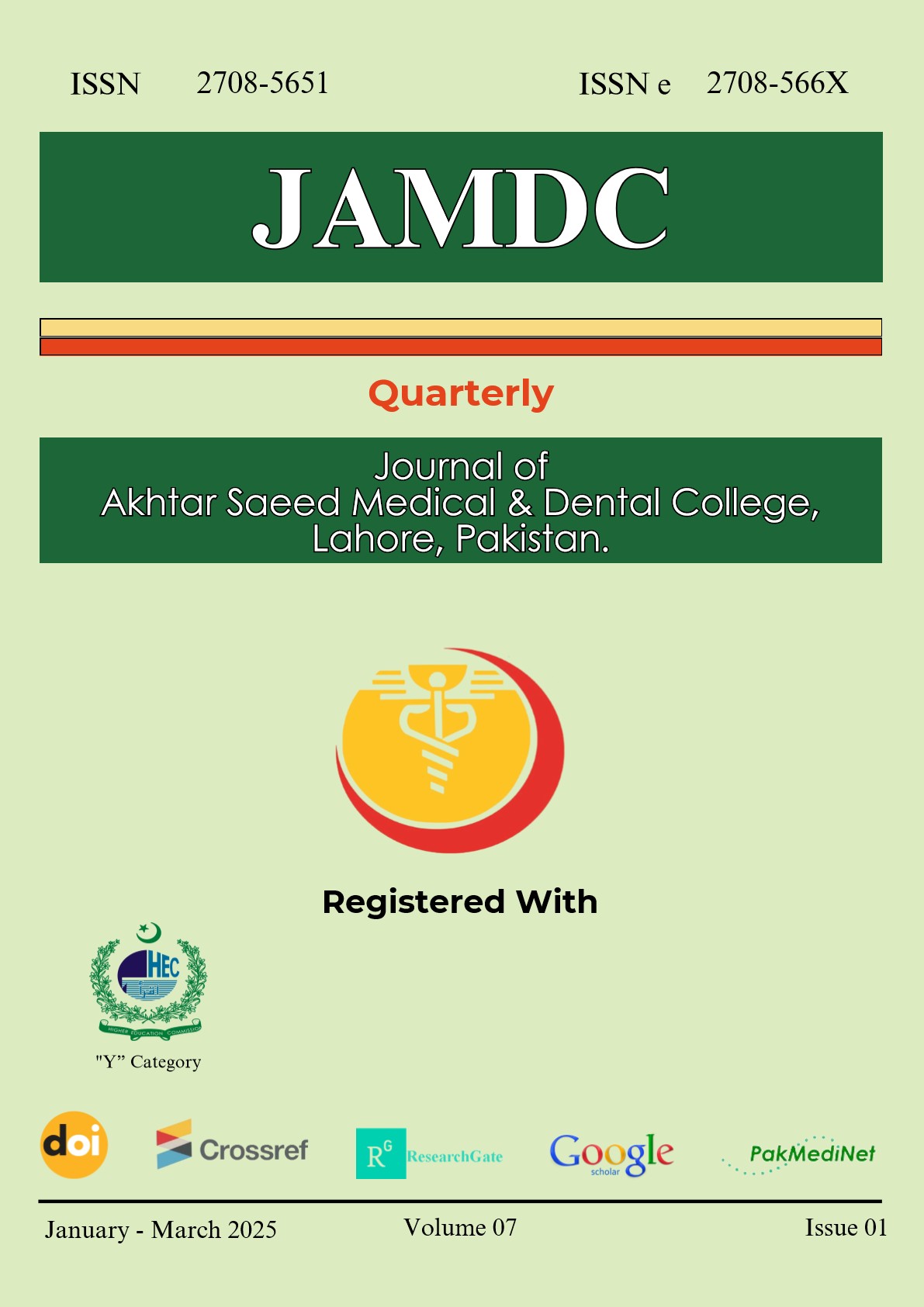CORRELATION BETWEEN BMI AND CARRYING ANGLE AMONG YOUNG ADULTS OF MEDICAL COLLEGE IN LAHORE
Main Article Content
Abstract
Background: The carrying angle refers to the angle formed between the arm's long axis and the
forearm at elbow joint, also referred to as cubital angle. Body Mass Index (BMI) is a metric used to
evaluate a person's weight in proportion to their height. Carrying angle & other anthropometric
measurements have been studied to explore differences in CA. The objective of the study was to
analyze the correlation between BMI and Carrying angle among young adults in Lahore.
Materials and Methods: It was a cross-sectional study design. One-hundred & forty-six healthy
young adults (18-25 years of age) participants were taken by Non-probability convenience sampling,
out of which 81 were females and 65 were males. Carrying Angle was measured using Goniometer.
Weight was measured with a scale, height with a measuring tape, and pelvic circumference with an
inch tape. Correlation of BMI and Carrying Angle among young adult population was determined
by using Pearson’s Correlation Coefficient and shown with scatter diagram
Results: The carrying angle showed no correlation with BMI, pelvic circumference, or weight. There
was significantly negative correlation p<0.05 between BMI and Height. The correlation between
height and carrying angle of left side was -0.184 with p-value of 0.026 and at right side it was -0.189
with p- value of 0.023.
Conclusion: No significant correlation was identified between the carrying angle and BMI, pelvic
circumference, height, or weight. BMI correlated negatively with Height.

